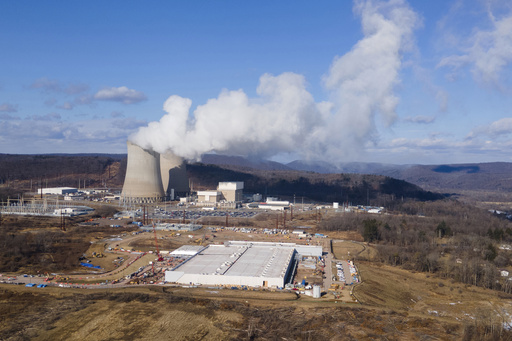NEW YORK — The price of copper has reached unprecedented heights due to ongoing trade tensions between the United States and its major trading partners, leading to concerns about tightening supply of this essential metal.
To mitigate the impact of potential tariffs, U.S. buyers have started stockpiling copper. On Wednesday, prices for the most actively traded copper futures contract surged to $5.24 per pound. So far this year, copper prices have increased by about 30%, building on more modest gains from the past few years.
President Donald Trump has issued a warning that a tariff of up to 25% could be applied to all imported copper, advocating for a boost in domestic production. Meanwhile, China, which stands as the globe’s largest copper importer, is implementing a stimulus program that might further elevate demand for copper.
“Tariff threats, tightening supply, and stimulus-fueled optimism for an economic rebound in China have underpinned a rally in copper,” explained Adam Turnquist, LPL Financial’s chief technical strategist.
Copper is a vital component in global energy infrastructure. It is essential for electronic cords, transmission lines, batteries, and LED lights. The worldwide shift towards cleaner energy technologies, such as solar power systems, has already driven an increase in copper demand. This demand is expected to keep growing as artificial intelligence advancements put more pressure on data centers and the energy grid.
Kathleen L. Quirk, President and CEO of Freeport-McMoRan, a major mining company, recently highlighted, “When you look at the uses of copper in today’s economy, those uses and the intensity of use of copper in today’s economy are growing.”
The International Energy Agency projects a 20% increase in copper demand by 2030, reaching 31,128 kilotons, with a further rise of 41% to 36,379 kilotons by 2040. The U.S. produced around 1.1 million tons of copper in 2024 but remains behind leading producers like Chile, Peru, and China.
Copper mining enterprises are gaining traction amidst the rising demand. Shares of Freeport-McMoRan, mainly operating open-pit copper mines in the U.S., have surged by 9% this year. Southern Copper, operating in Mexico and Peru, has seen shares increase by 8% in the same period. Conversely, the broader market has shown a decline, with the S&P 500 dropping 2.9%.
While the surge in copper prices spells potential profits for mining companies, it presents challenges for other sectors.
Industries such as construction and homebuilding might experience financial strains due to elevated copper prices, especially since demand is not aligning with available supplies. Persistent inflation has already driven up the cost of home construction. According to the National Association of Homebuilders, the total construction costs for a single-family home went up by nearly 9.2% in 2024 compared to last year. Increasing copper prices, along with the rising cost of other fundamental building materials such as lumber, could exacerbate inflation within this industry.
Consumers might also face higher prices on appliances, electronics, and other copper-containing goods, which could drive inflation and lead people to reduce spending on certain products.


